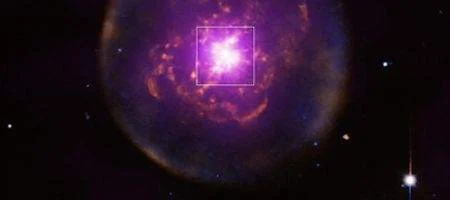European Space Agency astronomers have found evidence for a dying sun-like star coming back to life – something they say may happen to our own sun in a few billion years.

Abell 30, located 5500 light-years from Earth, is a planetary nebula – a concentric shell of stellar material cast into space by a dying star.
As a star with less than eight times the mass of the sun swells into a red giant towards the end of its life, its outer layers are expelled via pulsations and winds. Ultraviolet radiation shining out from the stripped-down hot stellar core then lights up the ejected shells.
The star at the heart of Abell 30 was stripped of its outer shell by a slow and dense stellar wind 12,500 years ago, as seen from Earth. It now appears as a large, near-spherical shell of glowing material expanding out into space.
About 850 years ago, though, the star suddenly came back to life, coughing out knots of helium and carbon-rich material in a violent event. The star’s outer envelope briefly expanded, but then rapidly contracted again within 20 years.
This had the knock-on effect of accelerating the wind from the star to its present speed of 4,000 kilometers per second.
The stellar wind bombarding dense clumps of material provides a chilling look at the possible fate of Earth and its fellow planets in our own Solar System in a few billion years’ time.
“When our sun emits its final gasps of life at the heart of a planetary nebula, its strong stellar wind and harsh radiation will blast and evaporate any planets that may have survived the red giant phase of stellar evolution,” writes ESA.
“If any distant civilisation is watching with high-power telescopes at the time, they might see the glowing embers of the planets light up in X-rays as they are engulfed in the stellar wind.”






